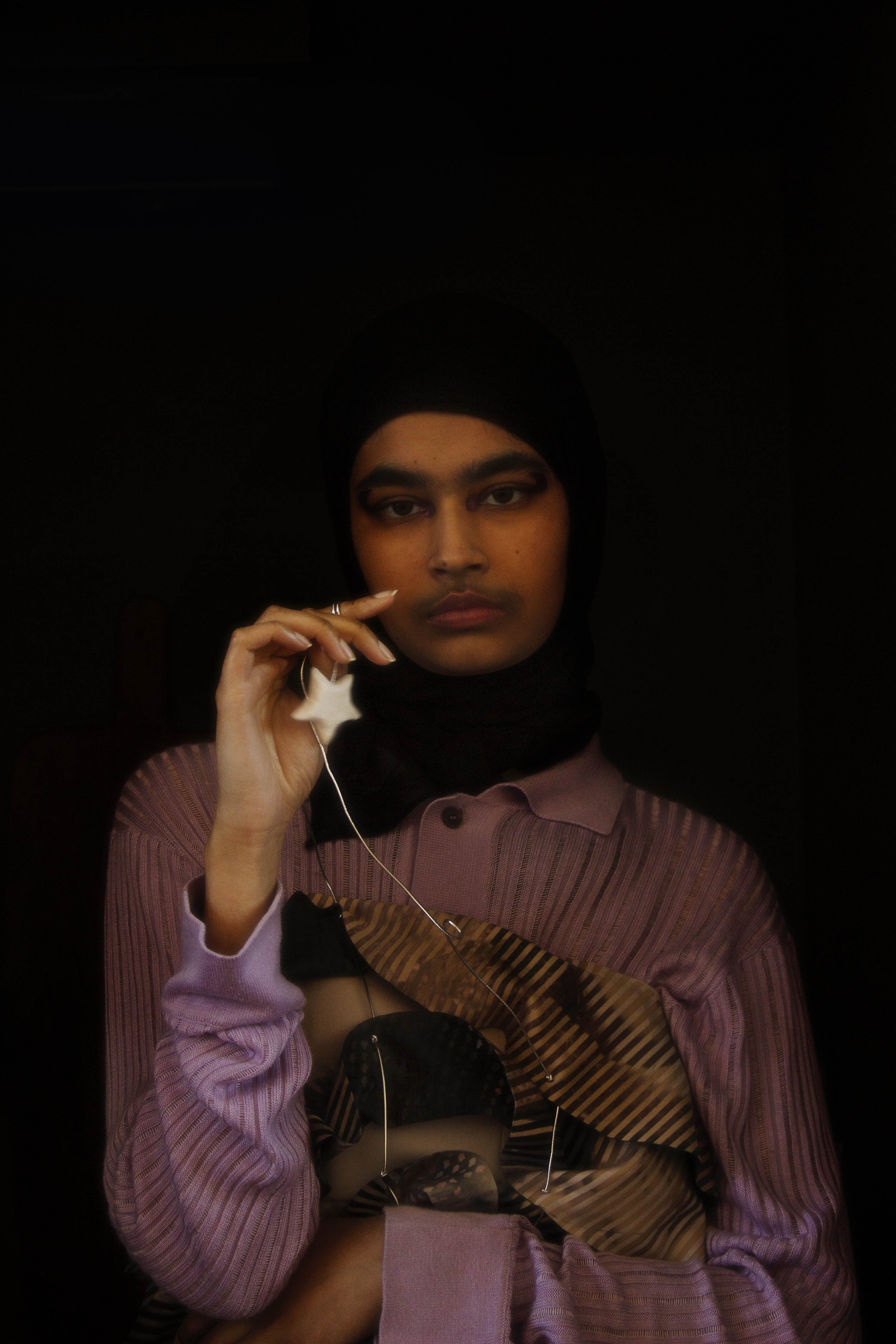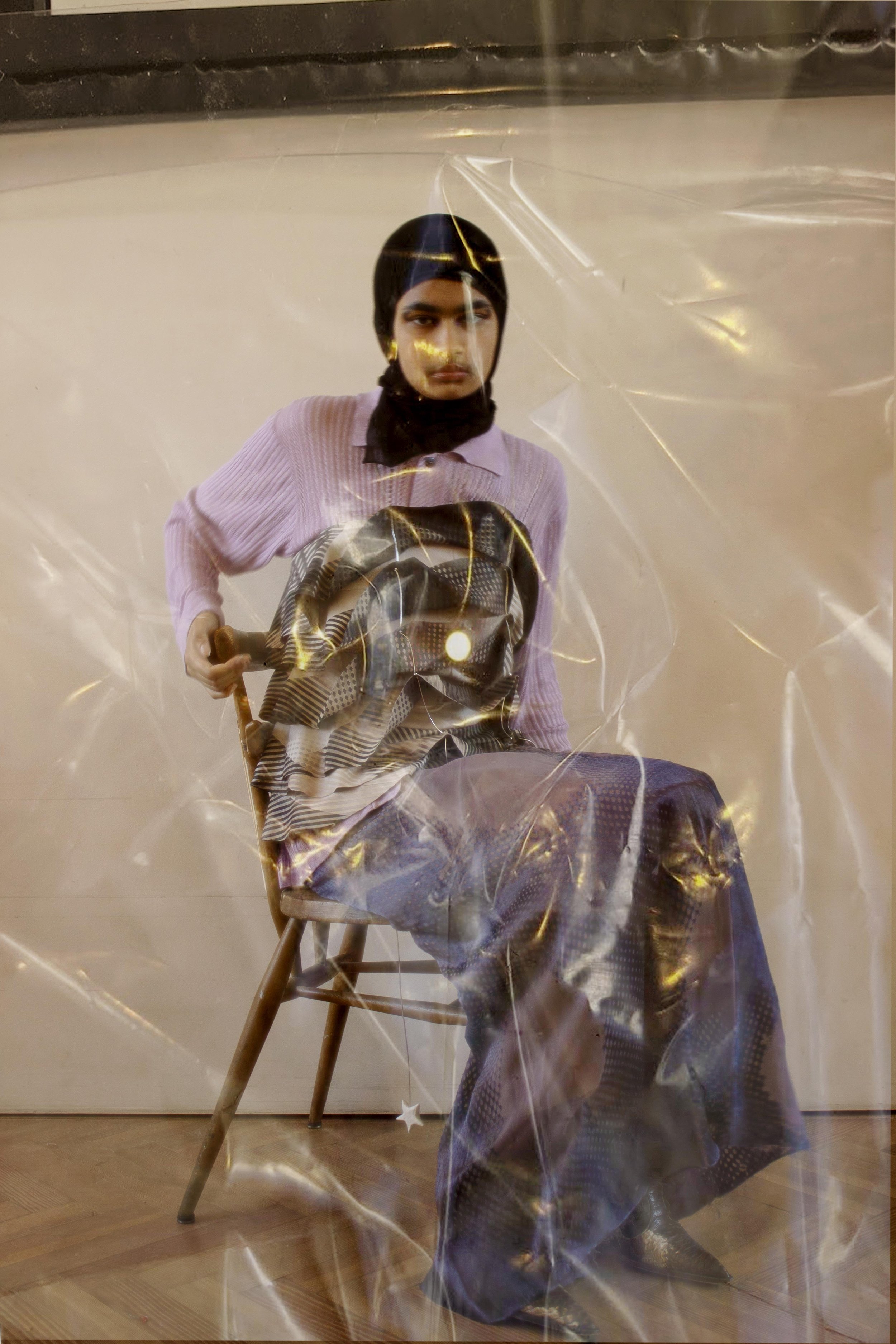Evolving its cultural connotations, Leen Abu Aisheh expands the stylistic possibilities of the hijab
Photography by Aparna Aji
Words by Leen Abu Aisheh
When I first stumbled upon the notion of “modest fashion”, I immediately discerned that these two words would resonate with me. As Middle Eastern women, we have been dressing “modestly” for decades, however we have been commonly stereotyped as “old-fashioned” individuals, and the fashion within our region has been generally associated with second skin garments, loose black outerwear and hijabs. There is a narrative that gets completely unheeded which highlights how fashionable we truly are.
It is true that modest fashion has recently gained global recognition – following its varied implementations by iconic faces within the fashion industry – however, a general misconception regarding modesty continues to exist within the fashion space, and a specific ignorance remains visible regarding those who have been consuming modest fashion – long before it became associated with a global progression. Predominantly, Middle Eastern women continue to be stereotyped as “oppressed”, whilst being misrepresented in the fashion realm, and a falsification of their image continues to be visible in visions of the future. Coming from Jordan, which is located in the heart of the Middle East, I sensed this misrepresentation, and as a London-based fashion stylist, my aim was to establish a series of projects that could help spread awareness and project a more accurate representation of women within my region – and beyond. I wanted to transform the conventional delusions by creating a space for women to be modest yet persistently fashionable and hypnotising.
In the “Cover Ahead” shoot I decided to shed the light on the “hijab”. Over the course of its history, the hijab has evolved into a unique and universal modest dress symbol. The eminent head-covering is not only loaded with cultural indications, but is additionally regarded as a tool of expression and as a fashionable statement by its wearer. Although hijabs appear to be similar across different cultures, their practice and intentions vary from one region to another. Women adopt hijabs as religious indicators, as communicators of their belief in feminism, as emblems of their struggle against colonial regime, or simply as devotions to their cultural values.
Whilst researching, I realised that mainstream western media commonly refers to hijabs as “head-covers” or “headscarves”, however, by converting the hijab into a transient fashion accessory, the broader cultural assertions behind it become immediately exhausted. As an article of clothing, the hijab carries different meanings and interpretations which go beyond being a “simple” piece of fabric draped around a woman’s head. In Arabic, the word hijab derives from the word ‘hajaba’ which means; to veil, to secure, to seclude, to cover, or to outshine. The word hijab also refers to a partition that divides or separates two spaces. Therefore, due to its complex nature, the word could be comprehended in multiple ways depending on the context and the culture involved.
Therefore, “Cover Ahead” explores the several meanings of the word “hijab” and its derivatives; from shielding to disguising to obscuring. The shoot aims at showcasing the richness and breadth of the Arabic language, while reinforcing the notion of being “lost in translation”. The multiple meanings of the hijab have been unveiled in the models’ styling, poses and movements. As a stylist with an interest in fashion that is both conservative and sophisticated I wanted to illustrate the varied degrees of covering up. There is not an item of clothing I used in this shoot which could be labelled as “modest” or not. It all depends on how it has been layered and styled. By doing this, I have been able to somewhat erode the stereotypes that have become attached to modest dressers' identities, whilst showcasing how diverse and fashionable they truly are.
Photography APARNA AJI
Styling LEEN ABU AISHEH
Makeup CHIE FUJIMOTO
Talent HUMI @MODELS1











